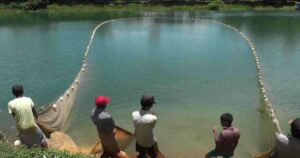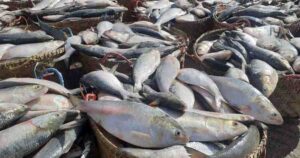Dhaka – The government will start marine resource assessment within the country’s boundary in the Bay of Bengal in this November by using a high-tech marine research vessel, says a senior official.
“The ocean survey ship, imported from Malaysia in June last, is expected to be inaugurated by Prime Minister Sheikh Hasina in November this year,” director general of the Department of Fisheries Syed Arif Azad has said.The government has procured the survey ship at a cost of Tk 65.5 crore under a Tk 165-crore marine fisheries capacity building project, being implemented with support from the Islamic Development Bank and the Malaysian government.
According to officials at the Fisheries Department, the high-tech 37.8-meter long multipurpose research vessel, equipped with the latest technology for fisheries and other oceanographic research, is expected to play a role in managing marine resources and improving the lifestyle of around 5 lakh people living in coastal areas who depend on fishing.
Arif Azad said the Department of Fisheries has already taken all-out preparations to launch the ship in the Bay to survey marine resources, but they cannot launch it right now for adverse weather.
He said the survey ship will go into operation in November next involving experts, oceanographers and researchers from Bangladesh Navy, Chittagong University and the Fisheries Department.
Prof Dr Hossain Jamal, a teacher of Marine Sciences and Fisheries Institute at the Chittagong University, said efficient manpower and adequate resources are a must to conduct an effective survey on marine resources and identify marine stock.
“Oceanographers and marine and fisheries researchers should be included in the ship to conduct a quality assessment of marine resources. Apart from manpower, an adequate fund is required to do so,” he said.
The Bay of Bengal is full of biological diversity, diverging amongst coral reefs, estuaries, sea fish and mangroves. It is one of the world’s largest marine ecosystems.
According to experts, Bangladesh will be able to conduct surveys on marine resources over the next 20-25 years uninterruptedly. It will also help the Department of Fisheries increase its capacity as a whole.
Though Bangladesh has a plenty of marine resources within its sea area, the country is yet to take any effective step to explore its potential over four years after the verdict of a UN court in Hamburg on March 14, 2012, allocating around 111,631 square kilometres of sea area to Bangladesh disposing of a dispute with Myanmar.
Then in July 2014, Bangladesh also gained about 19,467 square kilometres of maritime area (of the total 25,602 square kilometre-disputed area) from an ITLOS verdict in its case against India.
Dr Md Maruf Hossain, a marine sciences professor of Chittagong University (CU), said the two verdicts have paved the path for exploring marine potentials while the research vessel, procured from Malaysia, will help assess the marine resources.
He said there is no doubt that marine fisheries production will go up after their stock assessment since the assessment will help the government take effective policies to manage marine resources.
Dr Md Abdul Wahab, a fisheries professor of Bangladesh Agriculture University (BAU), said an extensive assessment could be done through the research vessel to identify the marine stock and how much fishes could be harvested from the sea. – UNB
Tiger census in Sundarbans to begin in mid-November
Dhaka – A tiger census using camera trapping method will begin in the Sundarbans in mid-November.
“The census will continue for the next three months installing 300 cameras in the Sundarbans,” divisional forest officer (Sundarbans West Zone) Md Sayeed Ali told UNB.
Two American experts of Washington-based Conservation Biology Institution will monitor the census under the Bengal Tiger Conservation Activity Project, according to forest officials.
Forest conservator Jahir Uddin Ahmed (Sundarbans circle) has been appointed as the project director.
Forest officials claimed that tiger breeding has increased in the world’s largest mangrove forest since tiger cubs are found roaming at Nilkomol, Kachikhali and Satkhira ranges of the forest.
Sundarbans is the lone natural habitat to tigers. But wildlife is currently facing various troubles in the country due to unchecked poaching and destruction of natural forests.
According to the Tiger Census 2015, tiger population declined to only 106 tigers in the Bangladesh part of the Sundarbans in 2015 while it was 440 in 2004.
Forest Department data shows at least 49 tigers were killed in the last 14 years (2001-2014) since the illegal poaching of wildlife and tiger-human conflict is on the rise in the Sundarbans, the country’s only natural tiger habitat with a range of 6,017 square kilometers. Besides, about 232 people were killed in tiger-human conflict during the period. – UNB




